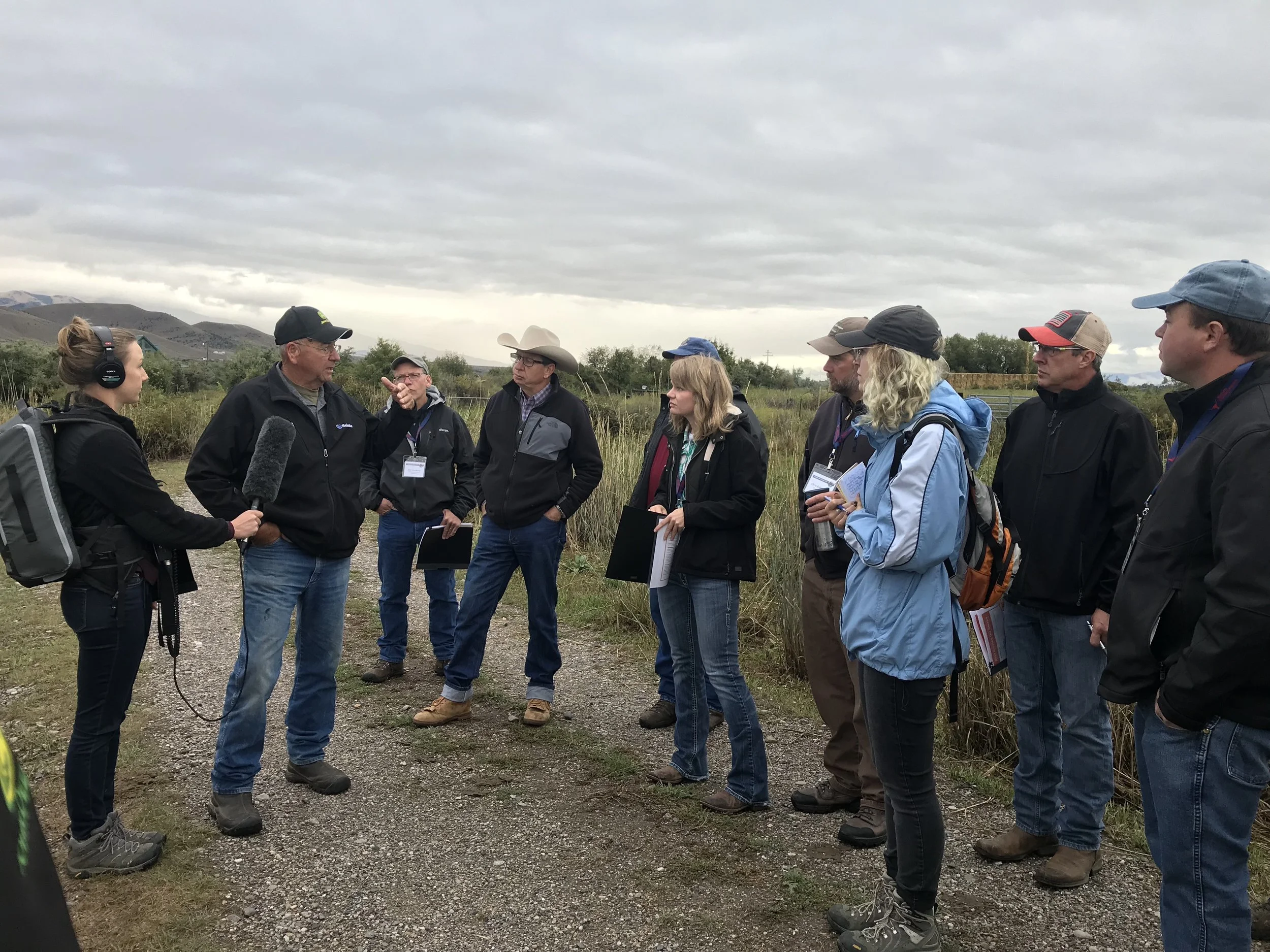In 1988, the Montana Department of Environmental Quality included Deep Creek on its list of impaired waters. Folks in Broadwater County took notice, but the real tipping point came when rancher Chuck Hahn began working with MT FWP’s Ron Spoon to restore the creek, which provided irrigation water to the Hahn ranch. The bold leadership of the Hahns encouraged other agricultural producers and landowners to come to the table to join discussions and form mutually beneficial solutions with agencies and water user associations. As a direct result, Deep Creek has been the focus of watershed restoration for over 20 years.
At a recent tour of the Hahn Ranch and the greater Deep Creek watershed, ranchers along with folks from Montana Fish Wildlife & Parks (MT FWP) as well as Montana Department of Natural Resources and Conservation (MT DNRC) spoke of the various elements that contributed to the successful improvement of Deep Creek.
One of the specific efforts mentioned was the role of MT FWP in funding the conservation efforts of landowners. MT FWP has a variety of vehicles they utilize to achieve mutually beneficial outcomes including (but not limited to) funding water conservation projects related to water conveyance and irrigation methods, finding alternative / replacement water sources for participating water rights holders, and leasing water rights for in-stream flow.
On Deep Creek restoration work funded by MT FWP has included projects such as replacing an open ditch delivery system with a screened pump to deliver water to irrigators. This particular project improved stream flow along two miles of Deep Creek, reduced water temperature, and eliminated fish entrainment into the former ditch. The funds to do this work comes from a combination of Future Fisheries Improvement Program (FFIP) money, NRCS EQUIP funds, and from fishing licenses.
Future Fisheries Improvement Program
Enacted in 1995, the FFIP provides funding for the long-term enhancement of streams and stream banks, in-stream flows, water leasing, lease or purchase of stored water, and other programs that improve wild fish and aquatic habitats. The FFIP’s emphasis on native species was amended and expanded in 2013 to include all native fish species, not exclusively bull and cutthroat trout. As of October 2018, over 600 projects have been completed since the FFIP began.
Water leasing
In the case of Deep Creek, the aggregate of the individual MT FWP water leases were entered into with the aim of achieving several different and complementary goals. Some leases were strategic in legally establishing a summer base flow to prevent dewatering the stream while also maintaining crop irrigation for landowners. Other leases have been entered into specifically to provide adequate connectivity in lower Deep Creek to provide for the spawning and rearing of resident and migratory brown and rainbow trout. Many of the leases have also met the goal of provided necessary protection of water rights for landowners so that landowners don’t lose their rights if they aren’t using them.
For example, a landowner may be interested in changing and improving irrigation methods to more effectively and efficiently use water. So, oversimplified, say a landowner has water rights for 10 cfs. By implementing sprinkler efficiencies, the landowner now only needs and uses 6 cfs for in their operations. In this case, a landowner has the right to 4 cfs that they ostensibly are not using anymore. In order to protect against the “use it or lose it” aspect of water rights in Montana (again, oversimplified), a landowner may choose to lease their remaining 4 cfs of water rights to MT FWP to preserve and protect them over time.
MT FWP has many ways to compensate the landowner for the water leased. Each lease is negotiable, but often MT FWP pays a one time payment or annual lease payments over terms of 20 to 30 years. In other instances, MT FWP may trade water or replace a water source for a landowner. And other times, they simply pay for conservation measures like switching irrigation methods that render the excess water they then lease.
Just as the payment structure of a lease is negotiable, so are the terms of the lease. Some leases are split season based on a trigger flow at a particular point in a waterway and others are based on particular months.
If you’re interested in potentially leasing water rights to MT FWP, we can put you in touch with water rights specialists and attorneys to verify and understand your rights as well as the correct folks at MT FWP and MT DNRC to find the optimal solution. If you’re curious to learn more, we can also put you in touch with other landowners who have chosen to lease their rights to MT FWP or Trout Unlimited to get a first hand account of the process and working relationship between the agency / non-profit and the landowner. Give us a call and we’ll connect you to the best source to answer any follow-up questions you may have.


